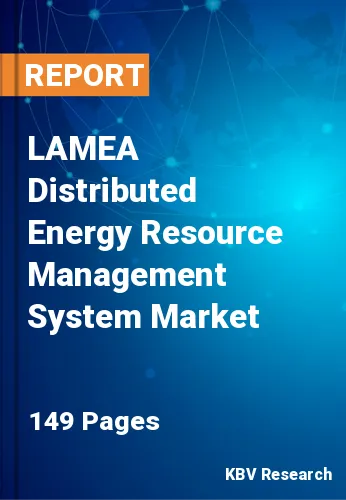The Latin America, Middle East and Africa Distributed Energy Resource Management System Market would witness market growth of 23.1% CAGR during the forecast period (2023-2029).
Increased productivity, cost savings, enhanced dependability, and environmental advantages are a few advantages of DERMS. Distributed energy resource management technologies assist companies and utilities in maximizing the output of their DERs, lowering waste, and raising overall effectiveness. In addition, DERM solutions contribute to sustainability and the reduction of carbon emissions by combining renewable energy sources like solar and wind power.
These DERs use a variety of energy sources, including solar, wind, as well as battery storage. There is an increase in energy consumption due to the extraordinary progress of industry and urbanization worldwide. Investments in energy from renewable sources have increased as a result of the rising need for energy to sustain human life. The demand for DERMS has increased due to the development of the renewable energy industry and the management of dispersed production.
There is a great demand for items due to the population's rapid growth and the rise of manufacturing activities across numerous industries. This is a result of both the industrial landscape's and urbanization's rapid changes. Massive consumption and expanding digitization have also expedited industry and raised demands for raw resources, production capacity, and manufacturing. As a result, the worldwide industrial environment occasionally encounters high peak load conditions to meet power demands. Because of the growing development of smart infrastructures and rising power consumption, there is a significant requirement for demand response management systems and software, which is expected to drive the market.
The United Arab Emirates generates most of its electricity thermally, with oil and natural gas playing a supporting role. Due to the UAE's top-notch gas resources, which have given the nation a competitive edge in energy costs and funding sources, gas-fired power plants, accounting for 90% of production, have been encouraged to be built. The UAE wants to build a sustainable infrastructure based on renewable energy to produce power. The demand for energy and water is expected to increase rapidly at an accelerating pace per year due to a growing population, a developing economy, and climatic factors. This will fuel the expansion of the regional distributed energy resources management system market.
The Brazil market dominated the LAMEA Distributed Energy Resource Management System Market by Country in 2022 and would continue to be a dominant market till 2029; thereby, achieving a market value of $22,792.9 Thousands by 2029. The Argentina market is exhibiting a CAGR of 23.7% during (2023 - 2029). Additionally, The UAE market would witness a CAGR of 22.7% during (2023 - 2029).
Free Valuable Insights: The Worldwide Distributed Energy Resource Management System Market is Projected to reach USD 1.1 Billion by 2029, at a CAGR of 19.4%
The market research report covers the analysis of key stake holders of the market. Key companies profiled in the report include Siemens AG, Schneider Electric SE, General Electric Company, Hitachi, Ltd. (Hitachi Energy Ltd.), Emerson Electric Co., Mitsubishi Electric Corporation, Oracle Corporation, Itron, Inc., Generac Holdings, Inc. and Enel S.p.A.
By Offering
By End User
By Application
By Country
Our team of dedicated experts can provide you with attractive expansion opportunities for your business.

